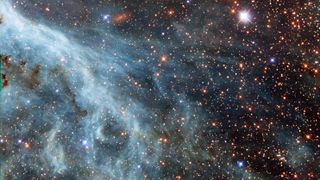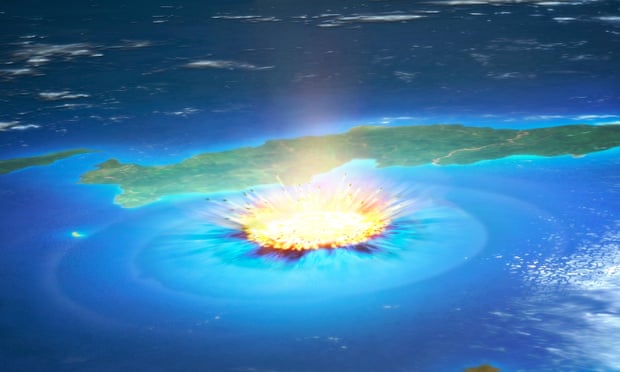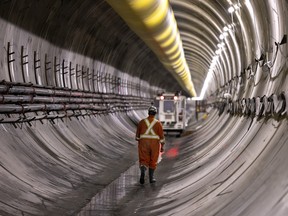BY BHAGYASHREE SONI

The high-security fossil vault on the University of the Witwatersrand (Wits), in Johannesburg, incorporates treasure extra treasured than the gold that paid for the college’s institution. It is the resting place of 5 of the ten identified partial skeletons of early hominins, the ancestors of human beings. In a glass case on the vault’s centre, resting on blue velvet, is Little Foot, the near-complete stays of a member of the species Australopithecus prometheus.
Wits is just not the one repository of such treasures. Farther north, in Pretoria, the Ditsong National Museum of Natural History hosts the cranium of Mrs Ples, a consultant of Australopithecus africanus, cousin to prometheus, and probably the most well-known hominin fossils but discovered. That these specimens are thousands and thousands of years outdated is just not unsure. But simply what number of thousands and thousands is disputed. A complicated courting method, known as cosmogenic nuclide courting, has upended earlier estimates—and, with that, is rewriting an vital chapter within the story of human evolution.
The first draft of this chapter opened on April 18th 1947, the day when Mrs Ples was found. Robert Broom, a palaeontologist on the Transvaal Museum (because the Ditsong was then identified) and his colleague John Robinson have been utilizing dynamite to blast aside a deposit of a sort of rock known as cave breccia, which had shaped from particles that had fallen into a set of limestone caverns at Sterkfontein, simply outdoors Johannesburg. When the mud settled, Broom noticed a number of fossils within the rubble. Pieced collectively, these shaped an ideal cranium. “Broom originally placed the fossil into its own genus, named Plesianthropus,” says Mirriam Tawane, curator of fossils on the Ditsong. “He thought the skull looked female, so he nicknamed it Mrs Ples.” As a scientific appellation, Plesianthropus has fallen out of trend. But, in on a regular basis utilization, Mrs Ples she stays. She (if “she” she be) is now categorised as the primary found grownup specimen of Australopithecus, the direct ancestors of Homo, the genus of recent people.
Mrs Ples’s unearthing was the start of an explosion of findings at Sterkfontein and different websites dotted shut by. The area is consequently often known as “The Cradle of Humankind”, and was declared a unesco World Heritage Site in 1999. Based on a technique known as uranium-thorium courting, Mrs Ples had been reckoned to be about 2.4m years outdated, give or take a few hundred thousand. But that date has been overthrown by work using cosmogenic nuclide courting. This suggests Mrs Ples—and a plethora of different fossils from Sterkfontein—are greater than 1m years older than beforehand thought.
Never ask an australopith her age
Researchers have recognized six distinct “geological members” of breccia at Sterkfontein. Members 1, 2 and three are nonetheless hidden deep within the caves, however Members 4, 5 and 6 have since been uncovered above floor. Over the previous 75 years excavations at members 2, 4 and 5 have yielded near 1,000 early hominin fossils (most of them fragmentary), accounting for greater than a 3rd of these thus far found, and making Sterkfontein by far the richest website of its form on the planet.
Mrs Ples was initially blasted from Member 4, the supply of virtually each Australopithecus fossil from Sterkfontein. The solely exception is Little Foot, recovered from Member 2 in 1994 by Ronald Clarke, a palaeontologist at Wits. But figuring out the ages of Member 2 and Member 4 has been devilishly exhausting. Established strategies of placing ages to hominin fossils depend on courting layers of volcanic ash above and under the strata through which they have been discovered, utilizing the uranium-lead methodology, one of many oldest and most refined courting strategies. That is ok in volcano-rich Kenya, Tanzania and Ethiopia, the principle different sources of hominin fossils. But mainland South Africa is among the least volcanically energetic locations on Earth. Consequently, researchers have needed to develop new courting strategies applicable to its geology.
Until lately, the perfect of those was uranium-thorium courting. Water trickling via limestone caves first dissolves, then deposits, calcium carbonate. Dripping from a cave ceiling, this creates stalactites and stalagmites. Percolating into empty cracks and cavities, comparable to these present in breccias, it creates flowstones. The ages of those flowstones may be decided by the ratio inside them of the radioactive parts uranium and thorium. The flowstones in Member 4 have been dated to between 2.1m and a couple of.5m years in the past, with flowstones in Member 2 an identical age.
“That looks like an unimpeachable case,” says Darryl Granger, a geologist from Purdue University, in Indiana. “But geology is often more complicated than that. The trouble with relying on flowstones is that they can be younger than the surrounding rock. There is nothing to stop a flowstone from forming in a crack that developed millions of years after the rock around it, for example.” This is what Dr Granger and his colleagues—together with Dr Clarke—argue occurred at Members 2 and 4 at Sterkfontein. To take a look at that concept, they instantly dated the cave breccias in Members 2 and 4 utilizing cosmogenic nuclide courting, which Dr Granger helped develop.
Earth’s floor is consistently peppered by cosmic rays. These are particles (largely protons) from outer area, transferring at near the pace of sunshine. “When cosmic rays pass through objects, they trigger nuclear reactions,” observes Dr Granger. “The products of those reactions—called cosmogenic nuclides—are often radioactive, and decay over time.” When a breccia-forming object falls right into a cave, it finds itself shielded from cosmic rays, and the regular decay of its present cosmogenic nuclides can be utilized to find out how way back it fell in.
Using this methodology Dr Granger and colleagues decided, in 2015, that the breccia in Member 2 is 3.7m years outdated—1.5m years extra historic than initially thought. “That was a terrific finding, but Little Foot is only one specimen,” he says. “We consequently turned our attention to Member 4, which has produced hundreds.” After years of effort, new dates for Member 4 have been printed in June within the Proceedings of the National Academy of Sciences. The workforce now reckon the Member 4 breccia shaped between 3.4m and three.6m years in the past, over 1,000,000 years sooner than believed.
Bones of competition
The standard story of hominin evolution says that the lineage which might turn out to be fashionable people cut up off from that resulting in chimpanzees roughly 6m years in the past, someplace in equatorial Africa. “The first members of the genus Australopithecus are thought to have emerged in east Africa roughly 4.5m years ago, evolving into the species Australopithecus afarensis close to 3.8m years ago,” says Dr Tawane. That is the species to which “Lucy”, a well-known partial skeleton found in Ethiopia in 1974, belonged.
Palaeontologists estimate that Homo emerged someplace between 2.5m and 3m years in the past. There being, till now, no proof of Australopithecus in southern Africa right now, researchers have assumed Homo advanced in east Africa as effectively. The earlier courting of the africanus and prometheus fossils at Sterkfontein and different websites in South Africa led to them being thought to be tangential to the principle, east African story of human evolution.
That interpretation is now threatened. “The fact that Little Foot was living at Sterkfontein 3.7m years ago complicated the picture,” says Dr Granger. “But it was only one specimen. The new dates of Member 4, however, place hundreds of Australopithecus specimens in the range of 3.4m to 3.7m years old.” This is identical age as (and even older than) lots of the Australopithecus fossils in east Africa, together with 3.2m-year-old Lucy. That brings into query whether or not Australopithecus emerged in east Africa in any respect, and hints that the genus could also be even older than beforehand thought.
The incontrovertible fact that two Australopithecus species have been waltzing about Sterkfontein previous to 3m years in the past locations the origins of Homo and its sister genus Paranthropus (a gaggle of much less brainy however extra strong upright hominins) up for grabs too, with South Africa as soon as once more a compelling candidate for the unique cradle of humanity. That is an encouraging prospect for scientists working within the Cradle of Humankind website, the place lots of of different caves await exploration. “These new dates from Sterkfontein complicate our understanding of early human evolution,” says Dr Granger. “But the uncertainty is exciting. The next decade is set to be a fascinating one.” ■
















